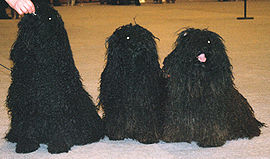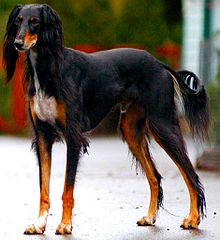01529 304273 - [email protected]
The Veterinary Tissue Bank in Wrexham is Europe’s first tissue bank and one of only two in the world to provide a tissue banking service to veterinary professionals for use in animals. It is dedicated to improving the quality of lives of pets by providing tissue grafts for veterinary surgeons to use during surgery. It is committed to excellence in quality, safety, education, research and care for pets, tissue is provided by deceased donor animals in the same way as the humans can donate organs.
There is no other veterinary tissue banking service in Europe. Our mission is to ethically source, retrieve and process tissues for veterinary tissue transplantation using the highest ethical and technical standards.
Unfortunately there are a great many things around the home, in the garden and on walks that can harm your pet.
This list does not represent a complete list of all poisonous plants and is only intended as a guide. Please contact your veterinary surgeon for advice or treatment immediately if you think your pet has eaten any of the following plants and is showing a bad reaction.
Just like people animals can also have an allergy or sensitivity to specific item, it may have no connection with its general toxicity, so always be vigilant and seek help from a veterinarian if you are worried about your pet’s health.
First is a list of List of common potentially poisonous household and garden substances –as supplied by the VPIS (Veterinary Poisons Information Service). Followed by a table of plants commonly found in around the home and the environment in the UK.
 Many people can, or think they can, assess the mood their pet is in without thinking about it, but assessing the mood of other dogs, or your own in a strange situation can sometimes be tricky. No matter the size of your dog, you do not want it to cause injury or distress to another person or dog, so being able to tell how he or she is feeling is important.
Many people can, or think they can, assess the mood their pet is in without thinking about it, but assessing the mood of other dogs, or your own in a strange situation can sometimes be tricky. No matter the size of your dog, you do not want it to cause injury or distress to another person or dog, so being able to tell how he or she is feeling is important.
This brief guide gives a few postures to look out for, and gives some advice about children and dogs.
Scarily enough:
• 90% of dog bites happen to people who know the dogs
• Most of the dogs that bite are the family pets
• 60% to 70% of dog bites are to children or the elderly
• 40% of the bites to children result in loss of facial tissue (lips, cheek etc.)
 The Puli (plural Pulik) is a lively, cheerful little dog who is very loyal. It is small-medium in size, its origin lies in Hungarian herding and livestock guarding dogs and is known primarily for its long, corded coat. The tight curls of the coat, similar to dreadlocks, make it virtually waterproof. A similar looking, but much larger Hungarian breed is called Komondor.
The Puli (plural Pulik) is a lively, cheerful little dog who is very loyal. It is small-medium in size, its origin lies in Hungarian herding and livestock guarding dogs and is known primarily for its long, corded coat. The tight curls of the coat, similar to dreadlocks, make it virtually waterproof. A similar looking, but much larger Hungarian breed is called Komondor.
Puli are reasonably intelligent, agile dogs. Despite their bulky appearance and very thick coat they are very fast, agile and able to change directions instantlyand are obedient enough to train for athletic competition. They are devoted and form close bonds with their owners.
They are excellent family pets and will adapt to most surroundings and circumstances. Their innate intelligence makes them easy to train. If the Puli senses their owners are not as strong minded as themselves they will become willful with a mind of their own, as they will believe they need to make up their own rules of the home. They do very well in obedience and agility as well as in the show ring.
 PLEASE FORWARD WIDELY TO ALL YOUR GROUPS/RESCUES AND CONTACTS IN UK INCLUDING ALL YOUR ‘LINCOLNSHIRE’ CONTACTS AND ALL WEBSITES,TWITTER, MYSPACE AND FACEBOOK FOR MAXIMUM PUBLICITY!
PLEASE FORWARD WIDELY TO ALL YOUR GROUPS/RESCUES AND CONTACTS IN UK INCLUDING ALL YOUR ‘LINCOLNSHIRE’ CONTACTS AND ALL WEBSITES,TWITTER, MYSPACE AND FACEBOOK FOR MAXIMUM PUBLICITY!
HAVE YOU SEEN THIS POOR LOST DOG CALLED ‘LADY’? SHE WENT MISSING ON 26TH NOVEMBER 2012. REWARD OFFERED FOR SAFE RETURN OF LADY!
White smooth bitch. Saluki cross Lurcher. Bit of tail feather. 2 yrs old. Not chipped not tagged. Lost Friday lunchtime in North Kyme, Lincolnshire. Went off across the fields. Not neutered. Marks and scars- dew clawed, little scar on her back,wearing purple collar.
Please see full info here on Dog lost-
If any details please phone-01287 200 012 and/or 07970 346 678.
We pray Lady is found asap, if you can help find her or have any information on her whereabouts please phone the above numbers. Lady could end up in the wrong hands!!
Please send this important appeal to all your ‘Lincolnshire’ contacts asap
Many thanks
SWAP team UK
 Originating in Germany, the Boxer is a stocky, medium-sized, short-haired breed. The coat is smooth and tight-fitting; colours are fawn or brindled, with or without white markings, which may cover the entire body. Boxers are brachycephalic (they have broad, short skulls), and have a square muzzle, mandibular prognathism (an underbite), very strong jaws and a powerful bite ideal for hanging on to large prey. The Boxer was bred from the Old English Bulldog and the now extinct Bullenbeisser and is part of the Molosser (mastiff) group.
Originating in Germany, the Boxer is a stocky, medium-sized, short-haired breed. The coat is smooth and tight-fitting; colours are fawn or brindled, with or without white markings, which may cover the entire body. Boxers are brachycephalic (they have broad, short skulls), and have a square muzzle, mandibular prognathism (an underbite), very strong jaws and a powerful bite ideal for hanging on to large prey. The Boxer was bred from the Old English Bulldog and the now extinct Bullenbeisser and is part of the Molosser (mastiff) group.
The Boxer is happy, high-spirited, playful, curious and energetic, often referred t oas the clown of the dog world. Highly intelligent, eager and quick to learn, the Boxer is a good dog for competitive obedience. It is constantly on the move and bonds very closely with the family. Loyal and affectionate, Boxers are known for the way they get along so well with children. A well brought-up and properly socialized Boxer will also get along with his own kind and other household pets such as cats. Animals such as rodents, ducks, chickens and other farm birds may be too tempting, however, they can be taught to “leave it” but it is still not recommended they be left alone with them.
 This breed has a great many names including Gazelle Hound, Arabian Hound, Persian Greyhound Tanji ,Persian Sighthound as well as the Royal Dog of Egypt. It is one of the oldest known breeds of domesticated dog. From the period of the Middle Kingdom onwards, Saluki-like animals appear on the ancient Egyptian tombs of 2134 BC. They have connections both to the Bible and Imperial China.
This breed has a great many names including Gazelle Hound, Arabian Hound, Persian Greyhound Tanji ,Persian Sighthound as well as the Royal Dog of Egypt. It is one of the oldest known breeds of domesticated dog. From the period of the Middle Kingdom onwards, Saluki-like animals appear on the ancient Egyptian tombs of 2134 BC. They have connections both to the Bible and Imperial China.
The Saluki is a sighthound and historically travelled throughout the Middle East with nomadic desert tribes over an area stretching from the Sahara to the Caspian Sea. They have been used to hunt quarry such as gazelles in the Middle East.
Saluki are gentle, friendly, even-tempered and extremely devoted dogs. They can be somewhat aloof, even with their family. This loyal dog may become very attached to one person. They are good with children who do not try and roughhouse with them. They are sensitive, and do not take kindly to harsh discipline. They must be trained with calm, gentle, but firm, consistency. They are fairly submissive by nature to people and dogs and are easily distracted. Be sure you remain the dog’s pack leader so the dog feels secure with his surroundings.
The Saluki do well with other Salukis, keeping more than one is often a good idea. They are a pleasant and calm companion and make a good watchdog. Though not aggressive with people, the Saluki’s natural instinct is to chase and kill non-canine animals. Take great caution around pets such as birds, guinea pigs, hamsters and rabbits. They can get along with family cats if the cat is allowed to assert its dominance over the dog, but may chase strange cats.
Q3 – I have been thinking of buying a Labrador puppy but am very worried about it developing hip dysplasia later in life as I keep hearing people mentioning it but I don’t really know what it is and don’t know what to check for when I start looking for a puppy.
Put simply, hip dysplasia is a condition in which the ball and socket joint of the hip does not form properly, such that the joint becomes unstable and there is abnormal wear and tear. Over time it is a disease that leads to reduced exercise tolerance, lameness and arthritis. Essentially it is something that effected dogs are born with, but becomes a progressive problem over time. It cannot be diagnosed until a dog has matured, as up to this point their skeleton is changing and we would not be assessing the final outcome. However, once fully grown dogs can be radiographed and the British Veterinary Association (BVA) has a team of experts who will examine the x-rays and then assign a score to give a quantitative indication (a number) that measures how well formed a particular dogs hips are. The lower the score the better, and each dog is marked out of a maximum of 106 (each hip up to 53).
This distressing condition has a higher incidence in some breeds, of which the Labrador Retriever is known to be one. To try and counteract this, responsible breeders will only use dogs with ‘good hips’ for producing litters. Good hips basically means choosing parent dogs who have a score lower than the average for that breed. The average can be marked in two ways, either as a mean or a median. The mean score can be markedly effected by a small number of dogs with very high scores, and can create an artificially high marker. Therefore the median, or middle dog, within a population of scores is now the figure recommended to be used by the BVA. As of Nov. 2011 the ‘mean’ score for the Labrador Retriever was 14, and the median was 10.
More information is available on this complex subject from the BVA at www.bva.co.uk.
Written by Miss Gemma Clark BVSc, PG(Dip), MRCVS.
Q2 – We have a young 15 week old spaniel who always urinates with excitement when anyone comes to visit and we don’t know what to. Will she grow out of it or is there something wrong with her can you help?
The first thing I would suggest is to get your puppy checked by your vet to make sure there is no medical cause for her to have a weak bladder. Secondly, well done if you have got her reliably house trained at all other times! Urinating at times of high excitement is quite a common behaviour problem, but if and when all medical causes have been ruled out there are still a few questions to answer. You need to decide if your puppy is struggling to control herself because she is so pleased to see her unexpected visitors, or because she is frightened. If you are unsure about this in any way I would suggest talking to a reputable trainer for help.
If your pup seems very happy to greet people then you probably need to work on making times of greeting less fun. Ask everyone in the house to ignore her when they first come to the house, this means no touching, no talking to her and no eye contact! Instead quietly and discreetly allow her access to the outside and wait for her to perform where she is supposed to. When this is done, let her know she has done the right thing with whatever reward works for her but try not to get her too hyped up! Allow your visitors to interact with her when she is calm – or as calm as a spaniel can be! Ask them not to fuss or overcrowd her and keep everything quite low key. To start with, visitors may have to meet your pup outside as she is likely to have a lot of setbacks while she learns to relax and realises that people coming round are just a part of everyday life. You can certainly help the process by remaining calm yourself whenever you enter and leave the house. Ideally, you leaving your dog shouldn’t be a big deal, making a fuss of her before you go makes it more distressing when you have gone, Equally when you get back you shouldn’t give too much attention as it focuses your dog on waiting for your return. If you can, you should try and avoid making either a significant event to your dog. If she has an accident, do not punish her as this may cause a fearful reaction to visitors, which is the last thing you want.
If you suspect that your dog is shy of visitors this needs careful assessment and training over a longer period of time. I would advise that you seek professional advise and your vet should be able to help you find a qualified reputable trainer or behaviour counsellor. In the short term, if you have an anxious or fearful dog give her somewhere to hide when people come to the house and ask visitors not to interact with her. Do not try to force the issue as this may be counterproductive. Over time, you can aim to changer her emotional state from fear to pleasure, but this requires time and patience and proper assessment of you and your dog as individuals.
Written by Miss Gemma Clark BVSc, PG(Dip), MRCVS.
Q1- Now that the laws have been relaxed with regards to moving your pets around Europe I am thinking of taking my 5 year old terrier on holiday with us to France. Can you advise on what is needed to get a pet passport for him and if there is anything we have to do when we go away?
The laws for issuing pet passports have now been relaxed such that our criteria in the UK now match that of the rest of the E.U. Previously, animals had to be identified by a microchip and then vaccinated against rabies. 21 days later a blood test was performed to confirm that the rabies vaccination had been effective. If this was not found to be the case – as has sometimes happened – then the rabies vaccination and blood test were repeated until the animal got the ‘all clear’. At this stage a pet passport could be issued. The animal could now leave the country, but could not return to the U.K within 6 months. There is now no need to confirm the success or otherwise of a rabies vaccination and after vaccination a passport can be issued. You still need the 21 day wait for the vaccine to take effect, but once that has passed you can travel out of and back into the UK. Before returning you must ensure your pet is treated against tapeworm 24-120 hours (1-5 days) before you arrive in the UK and this must be completed by a suitably qualified vet who can sign off your paperwork. There is no longer any requirement for tick treatment.